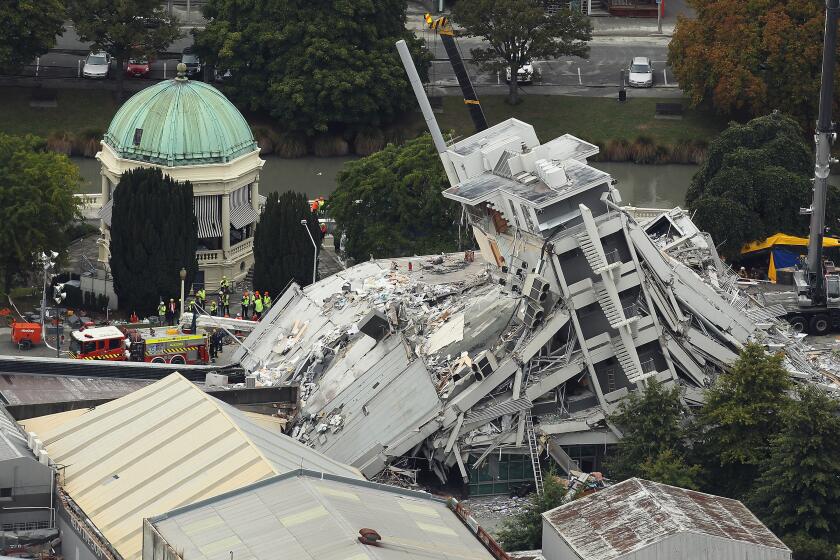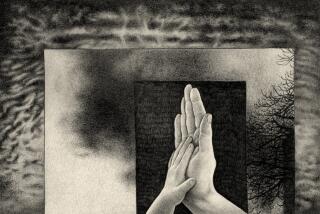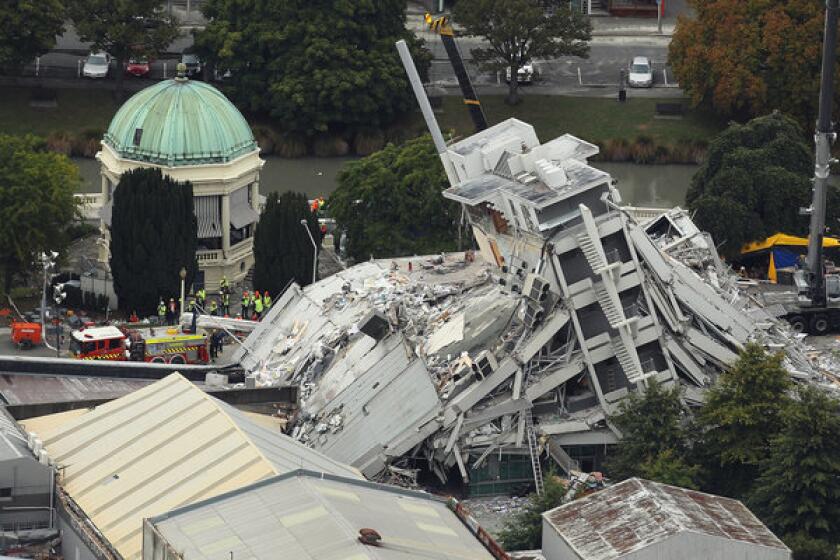When the Big One hits, emotional scars will last for years. Just ask New Zealand quake survivors

- Share via
CHRISTCHURCH, New Zealand — When a big earthquake strikes, the public’s attention immediately goes to the physically injured, the dead, or to collapsed buildings. But something else also starts: the toll on mental health.
Traumatic stress rises in the aftermath of a disaster, researchers say. One study examining survivors of 10 disasters found that one-third of them suffered a post-disaster diagnosis — with post-traumatic stress disorder being the most prevalent (20%), followed by major depression (16%) and alcohol use disorder (9%).
Worsening mental health has been documented in a number of recent disasters, including the aftermath of the magnitude 6.7 Northridge earthquake in 1994 and the magnitude 6.2 earthquake in Christchurch, New Zealand, in 2011.
Deteriorating mental health can sometimes be obscured by the phases of a disaster. Immediately after a disaster, researchers have documented that there can be a community emotional high as people enter into a heroic rescue mode, followed by a honeymoon period where a community bonds and there is unrealistic hope that everything can return to normal quickly. But then there can be a long phase downward, and it can be accompanied by stress, exhaustion and fatigue.
“The disillusionment phase is a stark contrast to the honeymoon phase,” the U.S. Substance Abuse and Mental Health Services Administration says. “As optimism turns to discouragement and stress continues to take a toll, negative reactions, such as physical exhaustion or substance use, may begin to surface.”
Experts say it’s important that officials recognize the looming public mental health crisis before a disaster strikes. After the Feb. 22, 2011, Christchurch earthquake, some say mental health services fell short and people suffered. Others say they got good care, and in subsequent years, public health officials embarked on an innovative public mental health campaign called “All Right?” that sought to improve the community’s mental health — a tactic that came back to prominence after shootings at mosques this year led to the deaths of 51 people, New Zealand’s worst mass killing in its modern history.
Here are lessons officials in New Zealand learned:
Understanding the emotional trauma from the quake can take time.
After the 2011 Christchurch earthquake, there was a widespread worsening of mental health, experts say, with the worst effects found closest to the strongest shaking. Children showed greater signs of post-traumatic stress. Even medical students reported their own mental health deteriorating.
More brain-calming drugs — a class of drugs known as benzodiazepines that includes Xanax and Valium — were dispensed after the earthquake. Researchers found increasing rates of mood and anxiety disorders in the two years after the earthquake.
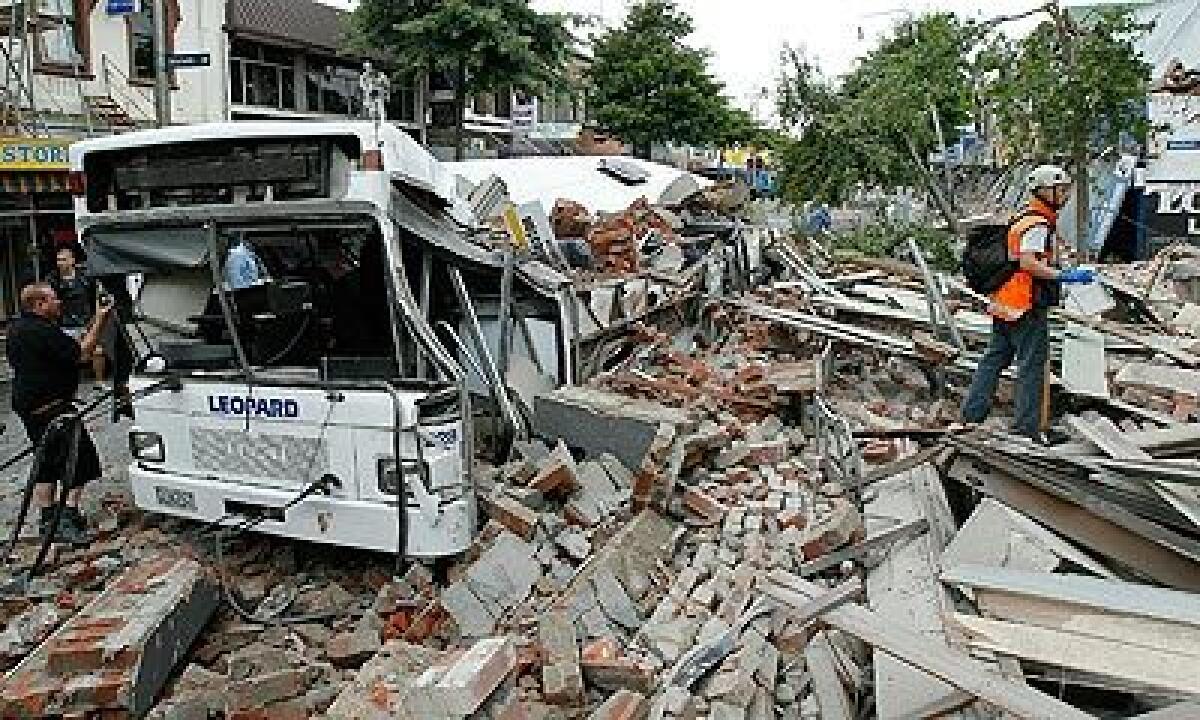
A 2016 review of studies of 76,000 victims of earthquakes calculated that roughly 1 in 4 survivors experienced PTSD — making earthquakes more likely to cause PTSD than floods or strokes.
“This was mainly because earthquakes were often much more devastating and destructive, and often happened unexpectedly without warning,” the authors wrote.
When aftershocks won’t quit, cake — and kindness — helps.
Part of what made the Christchurch earthquake difficult to recover from psychologically was the unusual length of the aftershock sequence.
“Imagine you had a terrible earthquake, and in every 30 minutes, or hour, or two hours or five hours, you get a little shake that reminds you of how terrible that first shake was,” said Sara McBride, a top public information officer for the emergency response effort in New Zealand. “It happens all day and night … there’s no respite … and you don’t know if the next shake is going to be worse than the last.”
Even officials were prone to distress. One solution? “Constantly feed people cake,” McBride said, who brought out slices after aftershocks turned her subordinates quiet, pale and upset. “Little small moments of compassion and comfort, like really good cake, make a surprising difference.”
A public mental health approach is essential.
Experts say health officials worldwide should pay attention to Christchurch’s mental health issues as a warning for what could come if a disaster strikes their region.
“They should absolutely be concerned,” said Dr. Ben Beaglehole, a psychiatrist who co-wrote many studies on Christchurch’s mental health issues following the quakes.
For all its problems, Christchurch’s mental health issues were partly alleviated, Beaglehole said, by the region’s concerted campaign to improve mental health, and its near-universal rate of earthquake insurance among homeowners.
“If you can do things in the post-disaster environment to make people feel secure and safe enough, with a sense of purpose and belonging, and a future pathway, then I think the adverse effects are going to be minimal,” Beaglehole said. “But if people continue to feel scared and unsafe and uncertain, that’s when people are going to struggle.”
Officials realized the focus on rebuilding the city must be about healthy people, not healthy buildings. A survey found that more than 75% of those surveyed said their home was damaged, and nearly 2 out of 3 grieved for the “lost Christchurch.” Among people who described what they felt when their efforts to hold things together failed, men talked about becoming angry; women described despair, depression and anxiety.
“We will never, ever manage to actually deal with the fallout from a large-scale event one consultation at a time. No system in the world could possibly provide that,” said Evon Currie, general manager of community and population health for the Canterbury District Health Board.
So public health officials conjured a public outreach campaign known as All Right? — emphasizing that it was OK, and actually quite acceptable, to be concerned about one’s mental health, and to move people out of thinking about issues beyond their control to a new mind-set where they are empowered.
Officials credit this public health approach with helping the community deal with the stresses of the quake. A poll of greater Christchurch residents found that the percentage of respondents saying their quality of life was good rose from 73% in 2013 to 81% by 2018.
A majority of studies found negative mental health effects resulting from the Christchurch earthquakes, Beaglehole said. One study of hundreds of Christchurch-born adults found a greater rate of mental health disorder among those who endured the quake than those who had moved away before the shaking began.
Earthquake survivors who suffered the most showed clear increases in mental health risk, that study showed.
In addition, Beaglehole said, those already receiving specialist mental health services before the big earthquake saw the severity of their mental health worsen considerably for a number of years.
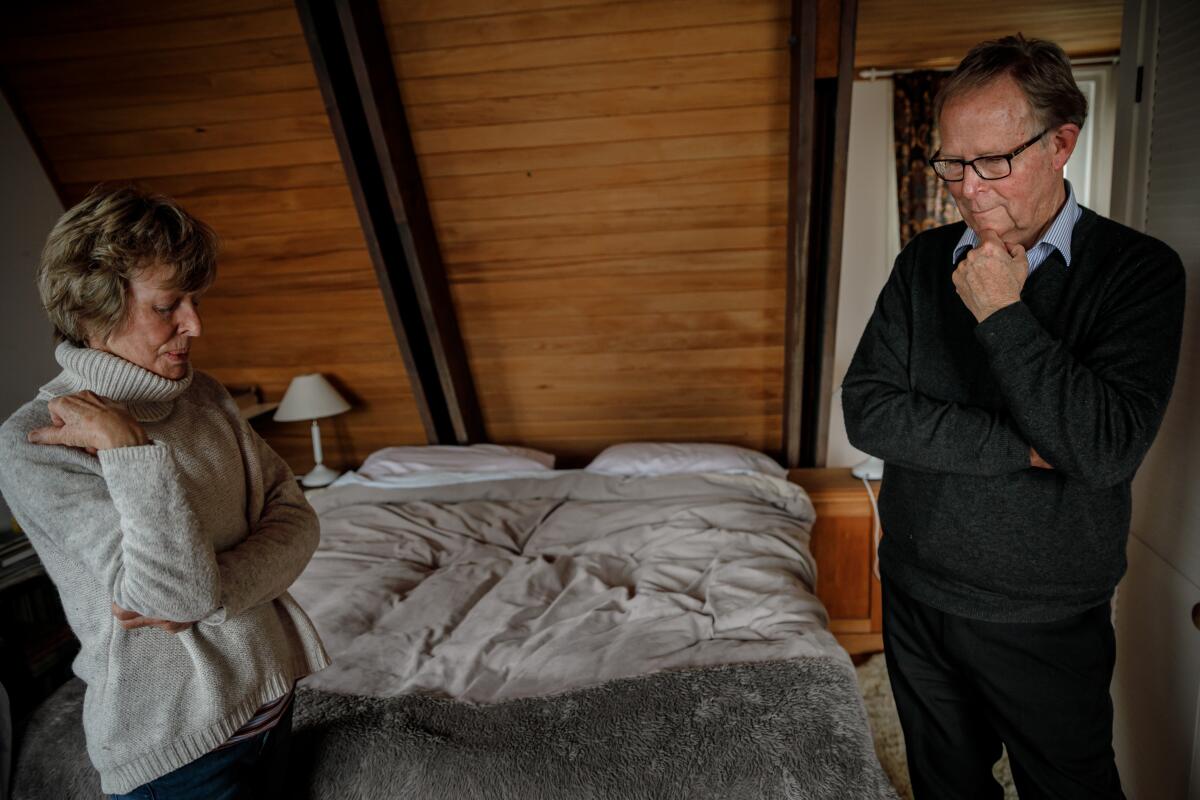
Disasters can trigger an acute mental health crisis.
Some people believe the earthquake triggered a spell of mental illness.
Eddy Snook took a deep interest in quakes when the Christchurch earthquake sequence began in the months before the deadliest tremor occurred.
It was a natural fit for him. He was an electrical engineer and loved to figure out how things worked. He drove out to the Canterbury Plains on the weekend and plotted fault lines.
But soon, life became difficult. Sam, his childhood best friend, died from cystic fibrosis. Then the February quake hit, and he was shaken. The quake seemed to coincide with major changes in mood and outlook, according to his father, John.
Snook demanded answers about whether the building he worked in was safe.
“He became quite obsessed with it,” his father said. “It became almost a bit too consuming for him.”
He soon quit his job and headed to London. But problems worsened; he stopped eating, and his friends called his parents to fetch him. He received medical help, but in hindsight it wasn’t working.
In 2014, he took his life.
“There are still tears every day,” his father said.
His father said Snook didn’t have the right medical help. “We didn’t anticipate what was going to happen…. I think the help that he had wasn’t really appropriate for his needs.” The medical attention he received didn’t address his problems, was confusing and not really caring, his father thought.
It takes work to stay mentally in check.
Christchurch’s 2011 earthquake forever changed Laylita “Bonnie” Singh’s life.
When the shaking started, something hard smashed into her skull as the unretrofitted brick building she worked in as a tattoo artist apprentice and receptionist came tumbling down.
The blow broke two of her neck vertebrae and six in the middle of her back — compression fractures “from being slammed on the head,” she said. She probably fractured her skull.

Her co-worker and friend didn’t make it.
Unlike Singh, who was trying to grab her phone, Matti McEachen, 25, a fellow tattoo apprentice, had raced to the exit and got to the doorway and then disappeared as the walls began to fall.
Singh was able to crawl out of the rubble, digging herself out. She had to learn how to walk over again; she suffered from survivor’s guilt. The pain persisted; the fatigue constant; the back and neck pain, excruciating.
In spite of all that, Singh held on to a dream of becoming her own tattoo artist.
She now co-owns the area’s only female-owned tattoo shop, Maid of Ink, in Christchurch’s neighboring port community of Lyttelton, after becoming a master tattoo artist under the tutelage of her former female colleagues and then starting a business with them. Her tattoo skills have blossomed — she can draw life-like portraits on calves using a technique called stippling; a single tattoo of angel-like wings on a back can be made of millions of dots.
“It was my driving force in getting well and carrying on,” Singh said.
She has been able to buy a home and raise her daughter as a single mom after she and her husband divorced. She says she makes enough to get by — sometimes business is “very OK,” other times, slim.
But the earthquake’s imprint lasts.
She hoped she’d recover significantly from her head injury in a year. Then a couple of years. Then four years. While she’s gotten much better, there are persisting effects. Sometimes, the back pain is so bad she can’t work.
“I get so tired. I get fatigued. It’s constant,” she says. She’ll have to watch herself. “Oh, if I do that and exert myself, I’ve got a week that I’ve got to pay for that,” she said.
“I just don’t think anyone understands how head injuries affect you until they’ve had one. Because it’s so invisible,” Singh said. Having a head injury felt like living in a fog, where “nothing was clear. Everything was exhausting.”
It takes work to stay mentally in check.
Meditation helps, as does yoga. Regular exercise is a must when she can do it; it’s so important to do the things that make her feel good. She dances, she sings. Writing three things she’s grateful for every day.
“Anything that uplifts you is the key,” she says. “I’m not saying I don’t get depressed — I do. It’s something that comes with trauma.… It affects you for life. So I imagine I’m going to have to do this for the rest of my life…. But I know the tools. As long as I’ve got my tools, I’m OK.”
More to Read
Sign up for Essential California
The most important California stories and recommendations in your inbox every morning.
You may occasionally receive promotional content from the Los Angeles Times.

